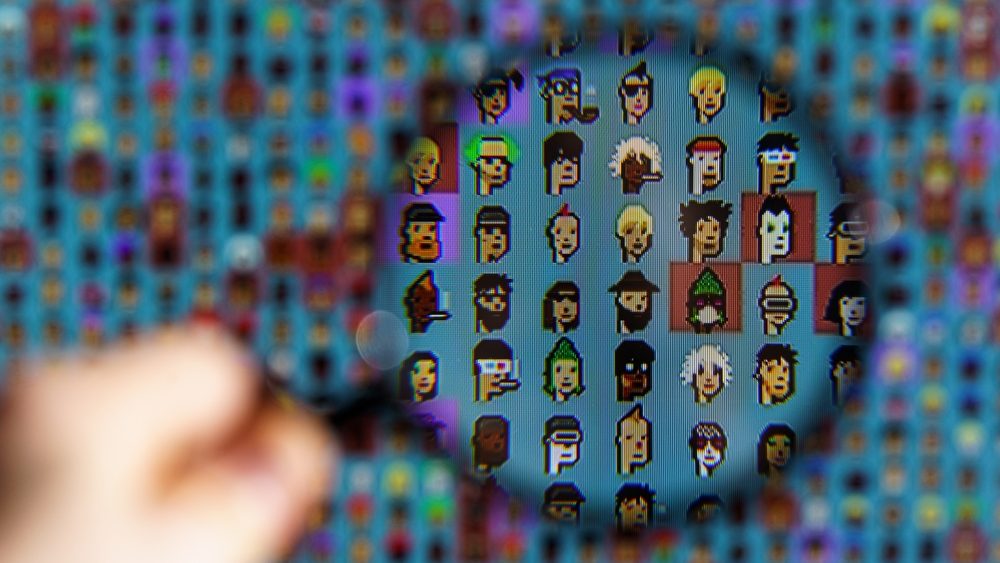What Is NFT (Non-fungible Token) — The Basics

Ever scrolled through your social media feed and seen articles about someone selling digital artwork for lots of money? Ever been eating at your favorite fast-food restaurant and overheard people talking about how they make lots of cash by playing certain games. Wondering exactly how any of this works? You’re not alone. Well, it’s all made possible by something called NFTs.
What is NFT?
NFT stands for non-fungible token. No, it’s not related to fungus or fungi. The term ‘non-fungible’ means one of a kind or insanely rare. If we think of it in the world of Pokémon, there’s only one Mew. Another example is the haunted Anabelle doll — it’s unique and extraordinary.
An NFT is a digital item or memento that represents worldly objects such as music records, artwork, videos, etc. These items are sold online (usually for cryptocurrency). Its unique identifier is having built-in authentication that serves as proof of ownership. In a way, NFTs can be considered collector’s items.
History of NFTs
NFTs gained in popularity in early 2018. But it all began around 2014 when digital artist Kevin McCoy created the very first NFT, a piece of digital artwork called ‘Quantum’. ‘Quantum’ features a pixelated, pulsating, hypnotic octagon containing circles, arcs, and other shapes that change in color and position.
Although the very first NFT was created in 2014, the idea started around 2012 to 2013 when ‘Colored Coins’ were issued in the Bitcoin blockchain. These ‘Colored Coins’ are tokens that can be used to prove ownership of real-world assets.
Afterward, every year has seen significant development within the NFT world. In 2014, Counterparty was created. Counterparty is a peer-to-peer financial platform and open-source online protocol built under the Bitcoin blockchain. It facilitates the sale of assets and items such as memes and cards. Around 2015, development started on Spells of Genesis, the first game based on the Bitcoin blockchain. In 2016, Counterparty issued collectibles in the form of ‘Rare Pepes’.
In 2017, the first rare digital art marketplace under the Eutherium blockchain was launched by CryptoPunks, and they currently have the most expensive NFT collection in the world. This year, the NFT-based game Axie Infinity has gained massive amounts of popularity, essentially becoming an online phenomenon.
Types of NFTs
NFTs can be sorted into different types. Some of which are:
1. Art — Artists are selling their artwork online as if it’s regular, physical artwork. One highly valuable piece of digital art called ‘EVERYDAYS: THE FIRST 5000 DAYS’ by Beeple sold for $69 million. Short videos and GIFs are also considered art.
2. Music — Musicians and DJs nowadays create one-of-a-kind music NFTs and sell them to make millions in a matter of hours. Many see it as a more lucrative option compared to selling music on streaming apps or dealing with record labels.
3. Video game items — In-game content like skins, characters, weapons, and more are being sold as NFTs.
4. Collectible items/trading cards — Anyone can sell collectible items on the NFT market. It’s not just limited to Pokémon, basketball, or baseball cards, either.
5. Memes — Do you remember Bad Luck Brian, Disaster Girl, Nyan Cat, and other memes? Well, they are sold and traded as NFT’s as well.
6. Domain names — almost everything can be sold as NFTs, and domain names are no exception.
The NFT marketplace
You’re probably now wondering where you can get your hands on some NFTs! Every blockchain has its own NFT marketplace, some sell all types of NFTs while some are more niche. Below are some of the top NFT marketplaces:
- OpenSea
- SuperRare
- Rarible
- Known Origin
- Atomic Assets
- Axie Marketplace
- Viv3
- Decentraland Marketplace
- TreasureLand
- NFT ShowRoom
NFTs: the good and the bad
Below is a short list of the pros and cons of NFTs:
Pros
- Monetization — NFTs can be sold to anyone and anywhere, which means they can help people dictate the price of their work or items they possess.
- Licensing solution — Since NFTs can’t be duplicated, ownership is easy to handle.
- Improvement — Over the past several years, NFTs have constantly evolved and changed.
Cons
- Pyramid scheme — Some say that NFTs are being used as a pyramid scheme that leaves people at the bottom hanging dry.
- Art theft — There are claims that some artwork is sold as NFTs without the original artists’ consent.
- Hype — People claim that it’s just a fad.
The future of NFTs
It is still the early days of NFTs so there is a lot of room for change, evolution, and progress. NFTs are a bit complex and hard to comprehend but not difficult to adapt to. Eventually, they will just become a normal thing.